Exploration minière
2020 — volume 1, numéro 2
Gold in the Abitibi Greenstone Belt, Canada : a Geological and Historical Overview
Since the first discovery of gold, the ensuing gold rush with the onset of production in the early 1900s, the Abitibi greenstone belt, that straddles the provinces of Quebec and Ontario, has been the main source of this precious metal in Canada with more than 190 million ounces of gold (Moz Au) produced. The total gold content of the belt, including production, reserves, and resources (measured and indicated), exceeds 300 Moz Au. It has made the country one of the top gold producers and one of the world’s most prospective areas for precious metals (Figures 1 and 2). The Abitibi greenstone belt hosts 21 world-class deposits containing more than 3 Moz Au each. An impressive total of 124 mines were put into production during the last century.
The main objectives of this brief overview are to present a historical perspective on gold production in the Abitibi greenstone belt and its dependency on the price of gold and key political events, and to highlight the geological parameters that have influenced the formation and distribution of gold mineralization in space and time. Since gold deposit types can form in different places and at different times, the mineralization is described below in terms of style rather than genetic type or by deposit.
-
Exploration minière
-
 The 20th Anniversary of the Research Consortium in Mineral Exploration (CONSOREM) A portrait of success in research and innovation in Quebec
The 20th Anniversary of the Research Consortium in Mineral Exploration (CONSOREM) A portrait of success in research and innovation in Quebec
-
 Historical and Geological Overview of an Exceptional Camp
Historical and Geological Overview of an Exceptional Camp
-
 L’or associé aux formations de fer rubanées ; gisements complexes mais à fort potentiel
L’or associé aux formations de fer rubanées ; gisements complexes mais à fort potentiel
-
 Le cobalt
Le cobalt
-
 Banded Iron Formation-Associated Gold Deposit
Banded Iron Formation-Associated Gold Deposit
-
 Gold in Quebec: Moving North of the Abitibi
Gold in Quebec: Moving North of the Abitibi
-
 Les 20 ans du Consortium de recherche en exploration minérale : portrait d’un succès en recherche et innovation au Québec
Les 20 ans du Consortium de recherche en exploration minérale : portrait d’un succès en recherche et innovation au Québec
-
 Aperçu historique et géologique d’un camp exceptionnel
Aperçu historique et géologique d’un camp exceptionnel
-
 Mines et projets miniers au Québec
Mines et projets miniers au Québec
-
 Le lithium
Le lithium
-
 Travaux géologiques récents et potentiel minéral de la Province de Churchill
Travaux géologiques récents et potentiel minéral de la Province de Churchill
-
 L’or dans la ceinture de roches vertes de l’Abitibi, Québec et Ontario, Canada
L’or dans la ceinture de roches vertes de l’Abitibi, Québec et Ontario, Canada
-
 Access to the Quebec’s Geoscience Information
Access to the Quebec’s Geoscience Information
-
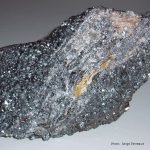 L’origine variée des gisements de fer
L’origine variée des gisements de fer
-
 Le scandium
Le scandium
-
 L’accessibilité des connaissances géoscientifiques au gouvernement du Québec
L’accessibilité des connaissances géoscientifiques au gouvernement du Québec
-
 History and Geology of the Labrador Trough
History and Geology of the Labrador Trough
-
 Mines and Mining Projects in Quebec
Mines and Mining Projects in Quebec
-
 Près de 25 ans de recherche appliquée et de géoscience publique en soutien à l’industrie minérale
Près de 25 ans de recherche appliquée et de géoscience publique en soutien à l’industrie minérale
-
 Magdalen Islands: Geological history of the archipelago and its salt deposits
Magdalen Islands: Geological history of the archipelago and its salt deposits
-
 Mines et projets miniers au Québec
Mines et projets miniers au Québec
-
 Mines and mining projects in Quebec
Mines and mining projects in Quebec
-
 Beyond Iron: The Potential for Base Metals in the Labrador Trough
Beyond Iron: The Potential for Base Metals in the Labrador Trough
-
 Exploration du lithium à la Baie-James : traitement statistique des données de sédiments de lacs par régression spatiale
Exploration du lithium à la Baie-James : traitement statistique des données de sédiments de lacs par régression spatiale
-
 Almost 25 years of applied research and public geoscience in support of the mineral industry
Almost 25 years of applied research and public geoscience in support of the mineral industry
-
 Histoire géologique de la formation de l’archipel des îles de la Madeleine et de ses dépôts de sel
Histoire géologique de la formation de l’archipel des îles de la Madeleine et de ses dépôts de sel
-
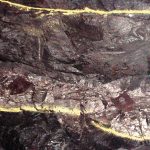 Géologie des métaux usuels critiques et stratégiques : le cas du cuivre, du zinc et du nickel
Géologie des métaux usuels critiques et stratégiques : le cas du cuivre, du zinc et du nickel
-
 20 years of SIDEX: At the heart of the mining industry
20 years of SIDEX: At the heart of the mining industry
-
 Mont-Wright: un gisement unique au monde
Mont-Wright: un gisement unique au monde
-
 Mines et projets miniers au Québec
Mines et projets miniers au Québec
-
 Geology of critical and strategic base metals: Focus on copper, zinc and nickel
Geology of critical and strategic base metals: Focus on copper, zinc and nickel
-
 Cobalt
Cobalt
-
 Les gisements d’or du Nunavut
Les gisements d’or du Nunavut
-
 Les bassins sédimentaires du sud du Québec et les cibles d’exploration pétrolière et gazière
Les bassins sédimentaires du sud du Québec et les cibles d’exploration pétrolière et gazière
-
 Définition, géométrie et paramétrage des enveloppes d’altération au pourtour des gîtes de SMV du camp de Matagami
Définition, géométrie et paramétrage des enveloppes d’altération au pourtour des gîtes de SMV du camp de Matagami
-
 Salt
Salt
-
 Definition, geometry and parameterization of alteration envelopes around VMS deposits in the Matagami camp
Definition, geometry and parameterization of alteration envelopes around VMS deposits in the Matagami camp
-
 Le sel
Le sel
-
 Mines et projets miniers au Québec
Mines et projets miniers au Québec
-
 L’or du Québec : de l’Abitibi aux territoires de Eeyou Istchee Baie-James et du Nunavik
L’or du Québec : de l’Abitibi aux territoires de Eeyou Istchee Baie-James et du Nunavik
-
 La saumure naturelle au Québec : une ressource au potentiel insoupçonné
La saumure naturelle au Québec : une ressource au potentiel insoupçonné
-
 Gold Deposits of Nunavut
Gold Deposits of Nunavut
-
 Acquisition et valorisation de données géométallurgiques à un stade précoce d’exploration
Acquisition et valorisation de données géométallurgiques à un stade précoce d’exploration
-
 Le fer
Le fer
-
 Les métaux de base : Exploration et exploitation du cuivre, du nickel et du zinc au Québec
Les métaux de base : Exploration et exploitation du cuivre, du nickel et du zinc au Québec
-
 Mines and Mining Projects in Quebec
Mines and Mining Projects in Quebec
-
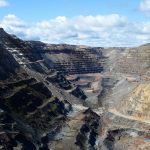 Acquisition and Management of Geoscientific Knowledge by the Quebec Government
Acquisition and Management of Geoscientific Knowledge by the Quebec Government
-
 Industrie du fer : un avenir qui est loin d’être morose
Industrie du fer : un avenir qui est loin d’être morose
-
 Les minerais de fer au Québec
Les minerais de fer au Québec
-
 Les minéraux industriels au Québec
Les minéraux industriels au Québec
-
 Le vanadium, un métal critique à l’économie américaine présent au Québec
Le vanadium, un métal critique à l’économie américaine présent au Québec
-
 L’or dans la ceinture de roches vertes de l’Abitibi, Québec et Ontario, Canada: un aperçu géologique et historique
L’or dans la ceinture de roches vertes de l’Abitibi, Québec et Ontario, Canada: un aperçu géologique et historique
-
 Les minéralisations aurifères d’Afrique de l’Ouest : différences et similitudes avec l’Abitibi.
Les minéralisations aurifères d’Afrique de l’Ouest : différences et similitudes avec l’Abitibi.
-
 La télécartographie prédictive, approche incontournable pour la mise à jour de la connaissance géologique au Burkina Faso
La télécartographie prédictive, approche incontournable pour la mise à jour de la connaissance géologique au Burkina Faso
-
 Mines et projets miniers au Québec
Mines et projets miniers au Québec
-
 L’acquisition et la gestion des connaissances géoscientifiques au gouvernement du Québec
L’acquisition et la gestion des connaissances géoscientifiques au gouvernement du Québec
-
 Au-delà du fer : potentiel de la Fosse du Labrador pour les métaux de base
Au-delà du fer : potentiel de la Fosse du Labrador pour les métaux de base
-
 Potentiel en métaux précieux et métaux de base dans la Fosse du Labrador
Potentiel en métaux précieux et métaux de base dans la Fosse du Labrador
-
 Histoire et géologie de la Fosse du Labrador
Histoire et géologie de la Fosse du Labrador
-
 Un potentiel minéral sous-exploré : la région minière de Chapais-Chibougamau
Un potentiel minéral sous-exploré : la région minière de Chapais-Chibougamau
-
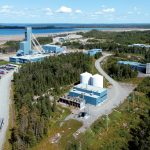 Les métaux de base : exploration et exploitation du cuivre, du nickel et du zinc au Québec
Les métaux de base : exploration et exploitation du cuivre, du nickel et du zinc au Québec
-
 Le Québec, un territoire d’intérêt à l’ère des communications et des énergies vertes
Le Québec, un territoire d’intérêt à l’ère des communications et des énergies vertes
-
 Des données analytiques aux modèles de blocs : la boîte noire de l’interpolation
Des données analytiques aux modèles de blocs : la boîte noire de l’interpolation
-
 Projets en milieux éloignés : exploration et gestion des risques de contamination
Projets en milieux éloignés : exploration et gestion des risques de contamination
-
 Exploration et environnement
Exploration et environnement
-
 L’évolution moderne de l’estimation des ressources minérales
L’évolution moderne de l’estimation des ressources minérales
-
 Apatite : des projets d’un grand intérêt au Québec
Apatite : des projets d’un grand intérêt au Québec
-
 Apatite : des projets d’un grand intérêt au Québec
Apatite : des projets d’un grand intérêt au Québec
-
 Exploration de l’apathie au Québec
Exploration de l’apathie au Québec
-
 Entrevue avec les géologues Jean-Marc Séguin et Youcef Larbi
Entrevue avec les géologues Jean-Marc Séguin et Youcef Larbi
-
 Mine Raglan : 20 ans d’opération minière au Nunavik
Mine Raglan : 20 ans d’opération minière au Nunavik
-
 Exploration et exploitation nickélifère au Québec
Exploration et exploitation nickélifère au Québec
-
 Exploration et exploitation cuprifères au Québec
Exploration et exploitation cuprifères au Québec
-
 Outils technologiques en soutien à l’exploration
Outils technologiques en soutien à l’exploration
-
 Exploration et exploitation aurifères au Québec
Exploration et exploitation aurifères au Québec
-
 La géophysique, un support à l’exploration aurifère
La géophysique, un support à l’exploration aurifère
-
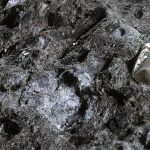 Jacques Cartier et les diamants du Canada
Jacques Cartier et les diamants du Canada
-
 Introduction à l’exploration minière : le diamant
Introduction à l’exploration minière : le diamant
-
 Introduction à l’exploration minière : le graphite
Introduction à l’exploration minière : le graphite
-
 Minéraux d’énergie : le Québec, un territoire des plus prometteurs
Minéraux d’énergie : le Québec, un territoire des plus prometteurs
-
 Introduction à l’exploration minière : le fer
Introduction à l’exploration minière : le fer
-
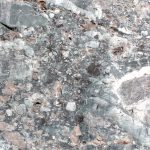 Thetford Mines : une odyssée géologique exceptionnelle
Thetford Mines : une odyssée géologique exceptionnelle
-
 Le coin du prospecteur : introduction à l’exploration minière
Le coin du prospecteur : introduction à l’exploration minière
-
 Projet nickélifère Dumont
Projet nickélifère Dumont
-
 Îles-de-la-Madeleine
Îles-de-la-Madeleine
-
 Le coin du prospecteur : introduction à l’exploration minière
Le coin du prospecteur : introduction à l’exploration minière
-
 Un secteur aurifère de grande valeur pour la province
Un secteur aurifère de grande valeur pour la province
-
 Le coin du prospecteur
Le coin du prospecteur
-
 Le projet de mine Arnaud : un projet de mine d’apatite à Sept-îles
Le projet de mine Arnaud : un projet de mine d’apatite à Sept-îles
-
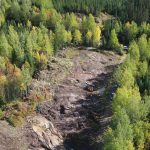 Le projet Lac à Paul : un projet de mine d’apatite au nord du Saguenay
Le projet Lac à Paul : un projet de mine d’apatite au nord du Saguenay
-
 L’exploitation de l’apatite au Québec, un potentiel bien réel
L’exploitation de l’apatite au Québec, un potentiel bien réel
-
 Le projet renard
Le projet renard
-
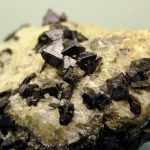 L’exploration du niobium
L’exploration du niobium
-
 Focus graphite : diversification minérale dans la région de Fermont!
Focus graphite : diversification minérale dans la région de Fermont!
-
 Mason graphite : vent d’optimisme sur la Côte-Nord
Mason graphite : vent d’optimisme sur la Côte-Nord
-
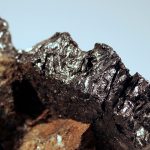 L’exploration du graphite au Québec
L’exploration du graphite au Québec
-
 L’ère du graphite : historique de la prospection à la production
L’ère du graphite : historique de la prospection à la production
-
 Val-d’Or, un camp minier bien vivant et pas à bout de ressources (2 de 2)
Val-d’Or, un camp minier bien vivant et pas à bout de ressources (2 de 2)
-
 Val-d’Or, un camp minier bien vivant et pas à bout de ressources (1 de 2)
Val-d’Or, un camp minier bien vivant et pas à bout de ressources (1 de 2)
-
